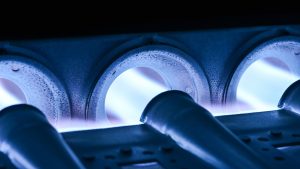Heating systems rely on our home electrical grids to work properly. Yes, even the most advanced and powerful gas furnaces still require electricity to operate. This isn’t just for fancy new lights or convenience, the electrical components in our furnaces are mostly responsible for making them more efficient and safer.
Think about it this way–back in the day, old furnaces relied on a pilot light for ignition. This wasted fuel regularly and also added to the soot and grime build-up over time that could cause issues and safety concerns. Now, with electrical ignition systems, you can simply turn on your furnace whenever you want without wasting fuel or an existing flame.
But what happens when your heating system encounters an electrical malfunction? Then you might need to call our team for heater repair in Ferndale.
Common Electrical Problems
Heating systems come in all shapes and sizes, but furnaces are by far the most common. Furnaces can run on natural gas or electricity, but each of them still has electrical components that need to be fixed when something breaks down. We’re going to mention a few electrical mishaps that can warrant a call with a trusted technician.
Broken Ignition
A gas furnace can’t work without either of the following: spark ignition, spark to pilot, or hot surface igniter. All of these components require an electrical connection.
If the system is letting gas into it but can’t create heat, it’s likely having a problem with the ignition. This can usually be fixed quickly by a technician.
Blown Fuse or Misaligned Circuit
There are fuses and circuits inside your furnace that usually connect it to the thermostat or the power grid. Sometimes vibration and rubbing of wiring can cause chaffing and low-voltage or high-voltage shorts, either tripping breakers or blowing fuses. This likely causes the system to stop working and thermostat to go dark or blank.
Call a professional when this happens.
Unconnected Thermostat
Your thermostat might also be going dark because the wiring isn’t set up properly. This is an important electrical part of your HVAC system and needs to be properly fixed.
A Tripped Circuit
How does your furnace get the energy to start up and shut down? From your home’s power grid, centralized at the electrical panel. A tripped circuit could have caused your system to shut down. Try resetting the switch in your panel, but also call us so we can inspect why this happened in the first place.
Note: When resetting the switch at the panel, keep in mind that all error codes will be lost. With new technology, most furnaces have diagnostic LED codes for troubleshooting, and resetting the power can lose the codes.
A Sensor Issues
Many furnaces can’t operate correctly if the sensor is being tripped. These sensors can monitor a problem inside the furnace, like gas leaking or moisture reaching levels that make it unable to run. When these sensors trip, the system will shut down until the problem is fixed.
The bad news is that you can’t just force your system back on when these sensors trip. They’ll usually need to be reset. The good news is that these sensors tripped for a reason, and having a professional technician reset them after fixing the problem will ensure your home stays safe and secure.
Our team of Home Performance Experts has served the I-5 corridor from Blaine to Marysville, Oak Harbor to Concrete, and the San Juan Islands since 1972 with a mission of Improving Lives™. We look forward to serving you too! Contact Barron Heating today for furnace service.

